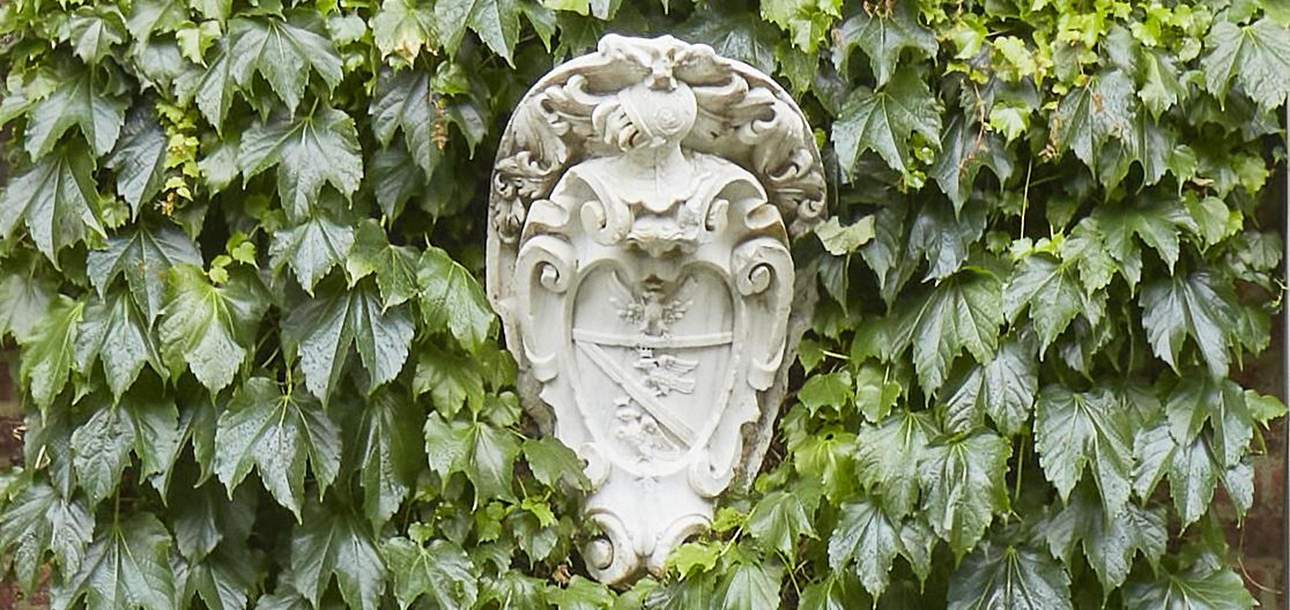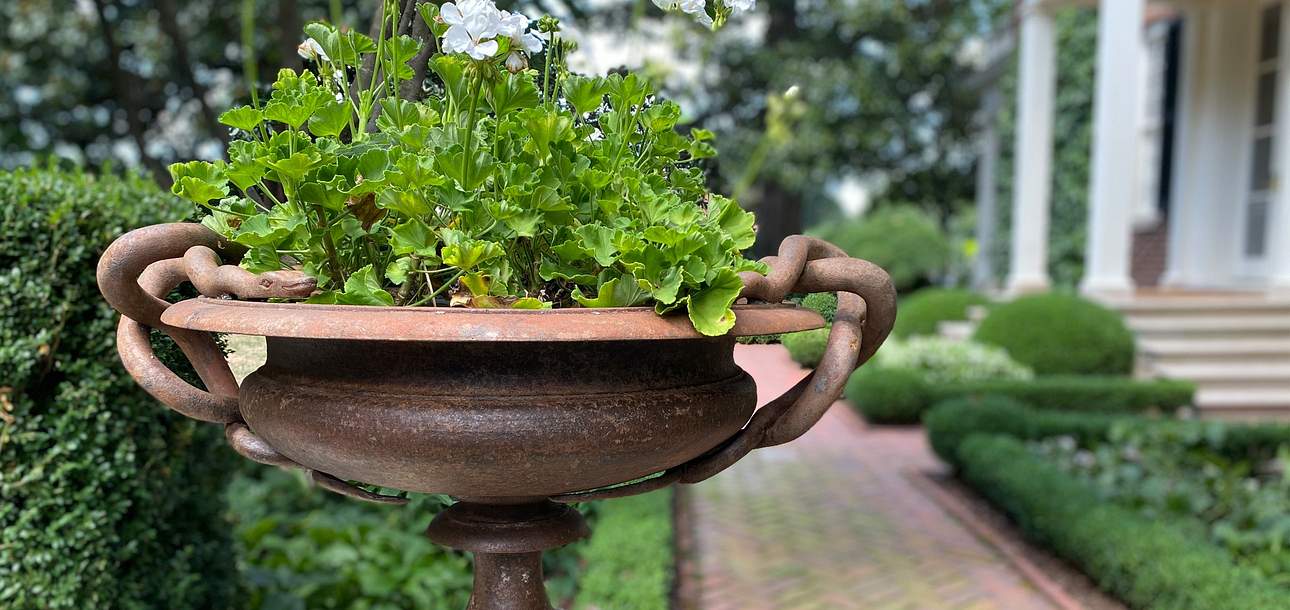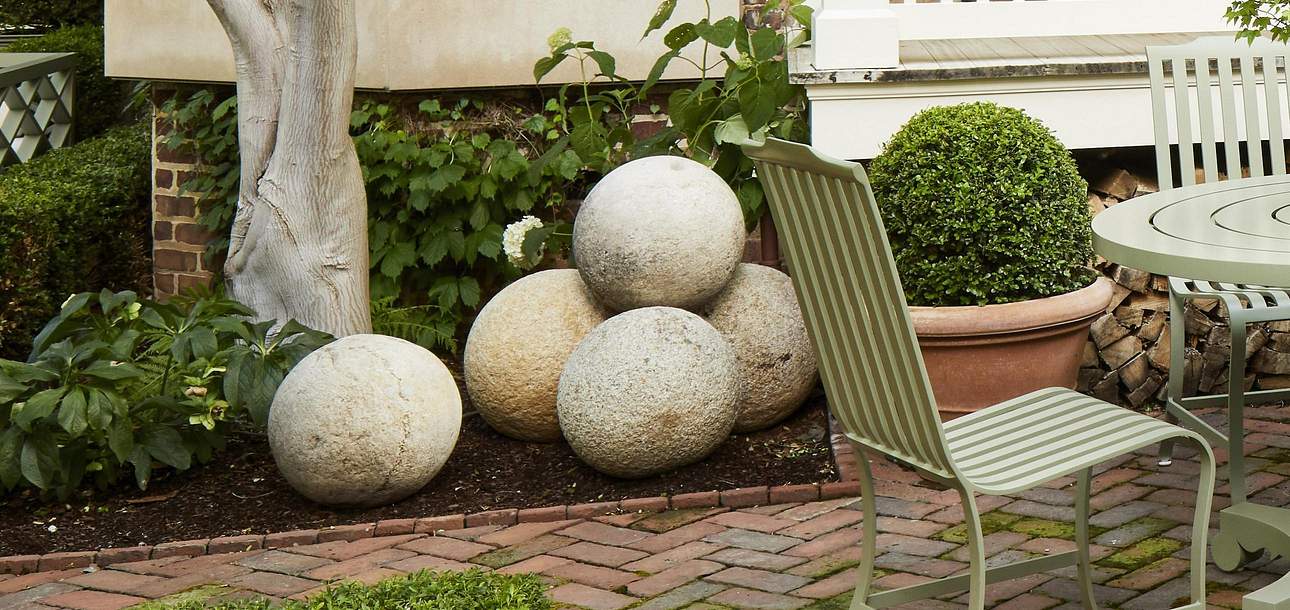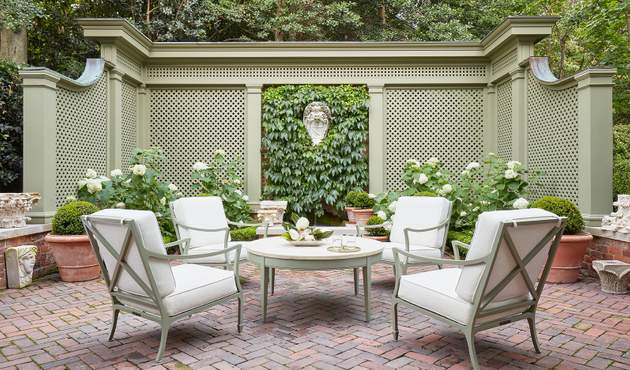

Integrating Decorative Elements Into Your Garden
Our co-founder, Will Massie, has been creating a garden oasis full of enviable flora and antique garden accents at his home in the Fan District of Richmond, Virginia for the past 20 years.
A master of all things outdoors, Will shares his insider tips below on how to incorporate garden statues and objects into outdoor spaces in a way that is both effortless and unexpected.

USe Contrasting Colors
I have a tremendous amount of brick in the garden – the house is brick, the walls are brick, the walkways are brick – so stone ornaments work really well. I have a lot of hand carved marble and limestone that really pops against all of the brick. Greenery also adds another layer of color contrast against brick, so I have a lot of Boston Ivy and boxwood. Boston Ivy is the perfect vertical lawn and it is a very green and efficient renewable energy source for the house. The shade of the leaves keep the brick wall cool in the summer and warm in the winter when the leaves are off.

Create a focal point
I bought the Italian cartouche over the fountain from Barbara Israel. It is 19th century from the Olgiati Family, a Northern Italian family, and it creates a beautiful focal point in the garden above the water.

collect pieces that age well
I have capitals everywhere and they are really easy to use in the garden as side tables, on our Spotswood Pier Table, on the ground, stacked. The very first piece I bought was a Gothic capital in Italy 25 years ago from the 12th or 13th century and it is still in my garden today. What I love about them is all of the subtle nuances–the variations, the patina and all of the different colors it starts to take on.
What is really amazing is the undercut you can get from the carving. I stay away from anything cast concrete because it doesn’t age well and over time it’s not going to look great. Whereas something carved by hand is just going to continue to get better looking 200 years from now. We apply that same principle to our handcrafted furniture. I continue to buy carved pieces because it represents how we make our furniture which is really more about removal of the material rather than something that is cast in a mold and made in multiples.

serpents - a gardener's friend
The Val d’Osne urns are some of my favorite pieces in the garden. The foundry was founded in 1835 and quickly became the largest cast iron maker in France during the 19th Century. Cast iron was more affordable than bronze, and the 19th Century experienced a craze for this material, that is why this century was also called “the iron century”. They produced the urns in three different sizes and these particular urns are marked with the number 3 because they are the largest size. I love them because of the serpents which are known to be a gardener's friend since they protect the garden from pests.

incorporate spheres
I’m drawn to spheres and I have boxwood spheres throughout the garden. I use these amazing Japanese Okatsune shears to shape my Green Beauty boxwood. They are hardened steel and perfectly balanced. The shears elevate pruning to an art form. There’s nothing more satisfying than shaping a sphere with these. If you are shearing boxwood it’s important to break off some branches to allow air and light inside of the plant.
The medieval Italian catapult balls would have been commonplace in every village and a large stack of them would keep the peace in the neighborhood. What I love about them are all of the subtle variations they have acquired over time. Their appearance only gets better with age.



